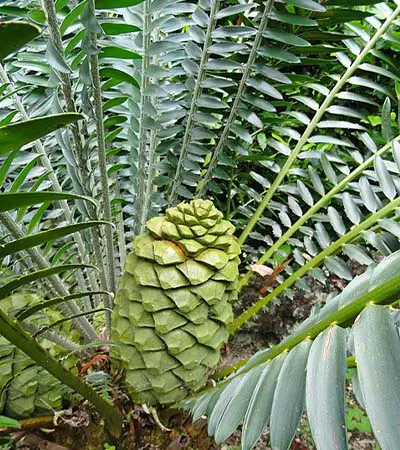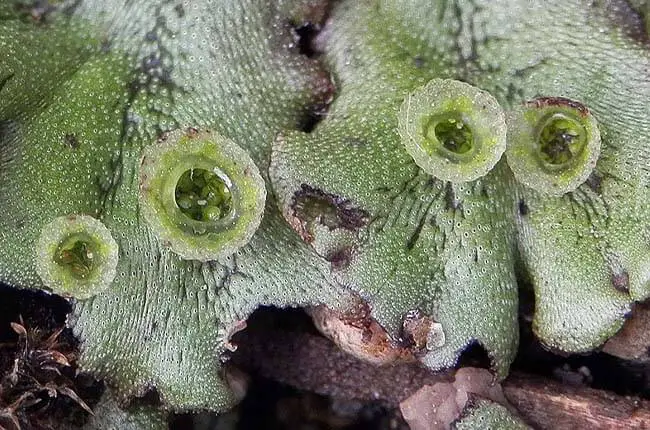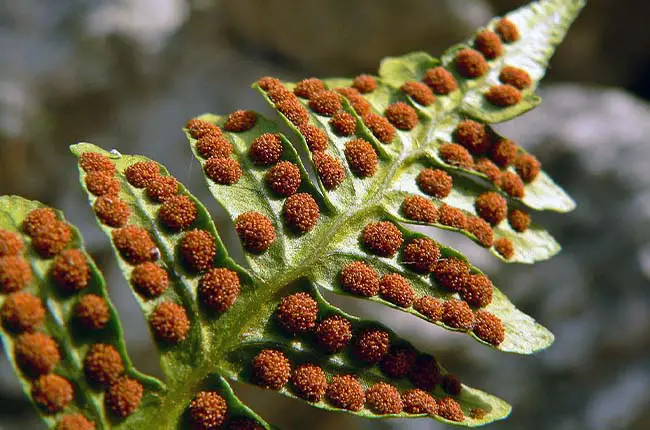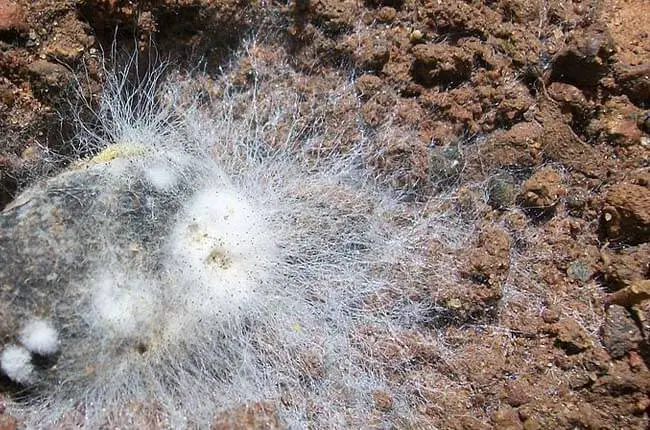It’s true – not all plants have flowers. And even though they don’t flower, these plants can still reproduce. In fact, they have adapted to live in harsh environments where they do not require a partner to reproduce.
Plants that do not flower can reproduce sexually through cones with naked seeds (e.g. conifers, ginkgos, cycads) and by producing spores (e.g. moss, liverworts, ferns) relying on the wind and water for dispersal. Some of these plants can also reproduce asexually by breaking off a small part of the plant to grow into a new one.
How do they do that? Let’s find out.
How do plants reproduce without flowers?
Plants that do not flower reproduce either sexually through cones or asexually through spores.
For sexual reproduction, gymnosperms reproduce through cones, just like flowering plants (also known as angiosperms) with ovules that need to be fertilized by male pollen to produce seeds.
Plants can also reproduce asexually by releasing spores which are reproductive cells and will germinate and develop into new individual plants.
Another way that plants can reproduce without flowers is fragmentation. This involves the parent plant breaking off a small part that later grows into an individual plant.
Non-flowering plants that reproduce with seeds
Plants that reproduce through cones are called gymnosperms, as opposed to angiosperms that reproduce through flowers.
Gymnosperms are woody plants, which can be shrubs or trees, but not vines.
Their cones are the reproductive organs which can be male or female. Female cones are generally larger as they house the ovules, while male cones contain pollen with sperm cells.
Some gymnosperm species have both male and female cones on the same plant (i.e. monoecious). In such cases, the females are located at the top branches of the tree, while the smaller male cones are at the lower branches.
Others have either female or male cones on each plant (i.e. dioecious).
In both instances, pollination is conducted via the wind, and sometimes insects.
When the male cone releases its pollen, it is brought by the wind to fertilize a female cone. The fertilized egg produces seeds that are “naked” or exposed rather than being enclosed inside a fruit for flowering plants.
The scales of the cones open at low humidity so that the tiny, light-weighted seeds can be dispersed easily by the wind.
Depending on the species, seeds can take between 1 year to many years to mature. For example, pine trees can take up to two years and cedars take 1 year after pollination to produce seeds.
There are four main types of gymnosperms, namely Pinophyta, Cycadophyta, Ginkgophyta, and Gnetophyta, with over 1000 species. 
(Nefronus, CC BY-SA 4.0, via Wikimedia Commons)
1. Conifers
The largest type of gymnosperms is conifers (Pinophyta) with about 615 species. Well-known species of conifers include pines, firs, spruces, and cedars.
Most coniferous plants are monoecious, with female cones on top branches and smaller male cones on lower branches.
Conifers are some of the tallest and oldest trees in the world. The vast majority of conifers are evergreen, retaining their leaves throughout the seasons, and are found in cool temperate regions.
Their leaves usually have a triangular shape. Some trees such as pine and fir have needle-like leaves, while cypresses and junipers have scale-like leaves. Conifers in the genus Nageia have broad flat leaves.
USDA-NRCS PLANTS Database / Herman, D.E. et al. 1996. North Dakota tree handbook. USDA NRCS ND State Soil Conservation Committee; NDSU Extension and Western Area Power Admin., Bismarck, ND., Public domain, via Wikimedia Commons
2. Cycads
Another type of gymnosperm is cycads (Cycadophyta). They are evergreen palm-like woody plants that prefer warmer climates and are found in tropical and subtropical regions.
Cycads are dioecious with either male or female cones on different trees, but never both on the same tree.
They are slow-growing plants, so they typically appear short, and can live for hundreds of years. They have a thick woody cylindrical trunk which is often unbranched, so their palm-like leaves grow out from the top of the trunk. Despite their resemblance to palms, the two groups are unrelated.
In some cases, most of the trunk grows inside the soil, so that only the leaves are visible above ground.
All parts of cycads contain toxins that can cause seizures, nausea, headaches, and even cancer. But the seeds have a higher concentration of the toxins and must be treated before eating by soaking in water for days to leach out the toxins.
(andy_king50, CC BY-SA 3.0, via Wikimedia Commons)
3. Ginkgos
Commonly known as Ginkgos (Ginkgophyta), the maidenhair tree (Gingko Biloba) with fan-shaped leaves has male or female cones on separate trees.
With wind pollination, one or both of the ovules are fertilized and become seeds. In autumn, right before the leaves fall, the seeds drop to the ground where they’re dispersed by animals.
The seeds have yellowish-brown flesh and look like yellow cherries. Seeds that are fertilized have a foul smell to keep away predators.
Ginkgos are quite large, growing up to 160 feet tall, with very thick trunks and deep roots.

(Aomorikuma, CC BY-SA 3.0, via Wikimedia Commons)
4. Gnetophytes
Gnetophytes reproduce with male and female cones on separate plants.
For fertilization to occur, the pollen from a male cone must be carried out by wind or insects to the female cones, where it comes into contact with the ovules. The fertilized egg then develops into a seed which is protected by the scales of the cone.
Gnetophytes species include Welwitschia, Ephedra (Mormon tea), and Gnetum gnemon (Java tea)
Non-flowering plants that reproduce with spores
Another type of non-flowering plants can reproduce sexually via spores which are reproductive cells that develop into a new plant and asexually via fragmentation.
Most of these spore-producing plants are non-vascular plants like moss, hornwort, and liverwort. But some vascular plants also reproduce with spores such as ferns and lycophytes.
5. Moss
Mosses (Bryophyta) are small, simple plants that can reproduce both asexually and sexually without flowers.
When a male moss plant matures, it produces sperms that travel by water to fertilize the egg cells of a female moss plant. The fertilized egg then develops into a capsule containing spores
which are released and germinate to form new moss plants.
Moss can also reproduce asexually by fragmentation, in which a piece of the plant breaks off and grows into a new plant.
Amongst the 12,000 species, the most commonly known ones include sphagnum moss, peat moss, black moss, fern moss, and juniper moss. They grow mostly in moist and shady areas, forming dense clumps or mats consisting of numerous simple leaves.

6. Liverworts
Liverworts (Division: Marchantiophyta) can reproduce both sexually and asexually.
Liverwort species can be either dioicous (with female and male sex organs on separate plants) or monoicous (with female and male sex organs on different branches of the same plant).
Some liverwort species can fire sperm water up to 6 inches (15 cm) in the air to fertilize female plants nearby. The fertilized egg then develops into spores which will be released from a capsule and the spores will germinate into a new plant.
Liverworts can also reproduce asexually through a process called gemmation by forming small cup-shaped structures called gemmae on the leaves of the plant. These gemmae contain all the genetic information necessary to produce a new liverwort plant. When the conditions are right, the gemmae will detach from the plant and fall to the ground, where they will germinate and grow into new plants.
Liverwort is flat and appears like a ribbon without any distinct stem or leaves. The body of these plants resembles a liver, hence their name “liverwort”. They prefer to grow in damp places.
Ryan Hodnett, CC BY-SA 4.0, via Wikimedia Commons
7. Hornworts
Hornworts (Division: Anthocerotophyta) are simple plants like moss and liverworts. They prefer to grow in damp soil in tropical and temperate regions.
Most hornworts are monoecious with both male sex organs and female sex organs present on the same plant. The sperms have to swim in the water to fertilize a female egg, resulting in a zygote that develops into spores.
Unlike liverworts, the hornwort sporophytes are photosynthetic and can release several batches of spores without withering.
8. Ferns
Ferns (Polypodiopsida) reproduce with spores.
These spores are produced on the underside of mature fern leaves (fronds). They clump together as sorus which can be orange, brown, or black in color.
Each plant has both male and female reproductive features that produce eggs and sperm cells. When water is present, the sperms swim across to fertilize the female egg which will develop into an embryo and will germinate into an individual fern plant.
When conditions are too dry to allow fertilization, ferns can also reproduce vegetatively. Ferns can produce baby ferns at the tips of mature fern leaves.
Ferns can also reproduce new ferns asexually at the tips of their rhizomes, which are underground roots that spread horizontally through the soil.
Popular fern species include Bracken ferns (Genus: Pteridium) and Horsetails (Genus: Equisetum).

(kaibara87, CC BY 2.0, via Wikimedia Commons)
9. Fungi
Fungi are eukaryotic organisms that reproduce asexually by releasing spores which are reproductive cells that can be disseminated by air or water.
One of the fungus types, molds, reproduces by releasing spores that settle on surfaces and begin to grow. Mold spores can be found in the air, on clothing, and on food.
Another type of fungus, or yeast, is single-celled and can reproduce by budding. When yeast germinates, new cells grow near the parent cells. The new cell then breaks away from the parent, taking with it a portion of the genetic material.

10. Algae
Algae also can reproduce vegetatively by fragmentation or breaking off a small part of the parent to develop into a new individual.
Algae like seaweed can also reproduce sexually with sperms traveling in water to fertilize a female egg and produce a zygote. The zygote eventually grows into spores, which germinate into a new individual.
Algae are closely related to plants, although they lack actual roots, leaves, and stems.

11. Lichen
Lichens are fungus and alga in a symbiotic partnership, where the alga provides the lichen with food or organic carbon through photosynthesis while the fungus protects the alga from UV radiation and excess water loss.
Lichens reproduce primarily asexually by fragmentation where pieces of the lichen break off and grow into a new individual plant.
Sexual reproduction between two lichens is almost impossible. The fungus may produce spores, but it will develop into a fungus and not a lichen.

Conclusion
Many plants on Earth can reproduce without flowers. These plants can usually grow in difficult places with little sunlight, cold places where few animals inhabit to disperse their seeds.
For sexual reproduction, these plants (mostly cone-bearing trees such as conifers, ginkgos, and moss) mostly rely on the wind and water to disperse their seeds or spores.
Some of these plants (e.g. ferns, moss, fungi) can also reproduce asexually without a partner, by breaking off a part of its body to develop into a new individual plant.
Related
Is Moss a Fungus, Mold, Alga, Lichen, or Liverwort?
How Long Do Seeds Last? (And How to Store Them)
Top 12 Fruits That Grow True To Seed
References
North Carolina State University. (n.d.). Propagation. NC State Extension Publications.
University of Nevada. Gymnosperms.
Chaw, S., & Sudianto, E. (2018). Plastid Genome Evolution. ScienceDirect.
United States Geological Survey. (2020). 12 Days of Conifers: Conifer Trees and How We Study Them | U.S. Geological Survey. USGS.
Cai, C., Escalona, H., & Li, L. (2018, September 10). Beetle Pollination of Cycads in the Mesozoic. ScienceDirect.
University of Notre Dame. Cycads.
George Mason University. Poison Project Page- Sago palm Plant.
Gilbert, S. F. (2000). Developmental Biology. 6th edition. NCBI.
Australian National Herbarium. (2012, September). What is a hornwort? – bryophyte.
University Of California, Berkeley. Life History and Ecology of the Ginkgoales. UCMP.
University Of California, Berkeley. Introduction to the Anthocerotophyta. UCMP.
Utah State University. (n.d.). Western Brackenfern. Utah State University Extension.
United States Department of Agriculture. Fern Reproduction. USDA.
United States Department of Agriculture. About Lichens. USDA.
Redmond, S., Green, L., Kim, J., & Neefus, C. (2014). New England Seaweed Culture Handbook-Nursery Systems. National Oceanic and Atmospheric Administration.
- Top 6 Drip Irrigation Systems for Raised Beds (2025) - January 31, 2025
- Top 10 Orchid Fertilizers: A Comprehensive Review (2025) - January 16, 2025
- Top 6 Slow-Release Fertilizers for Houseplants & Veggies (2025) - January 15, 2025
